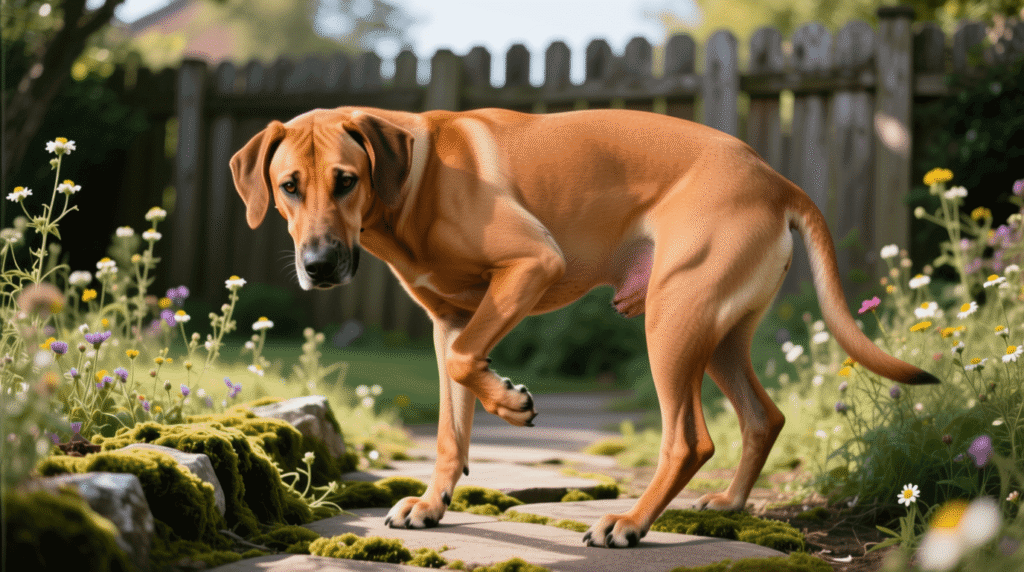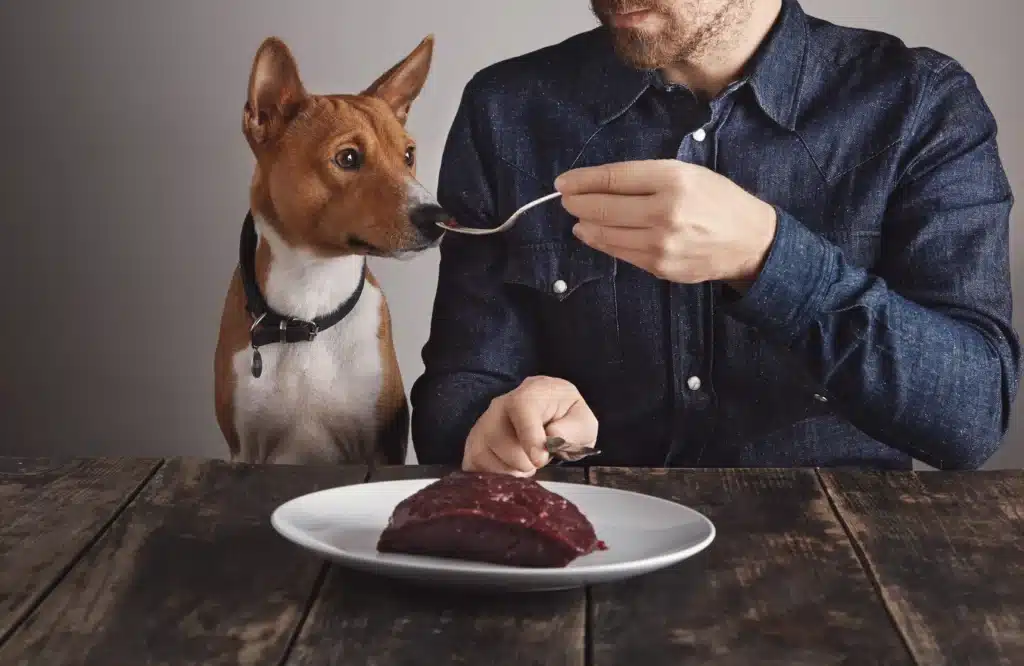Rhodesian Ridgebacks are large, athletic, and intelligent dogs originally bred in Southern Africa to track and guard against lions. Their powerful build and high energy levels make them exceptional companions—but they also have unique dietary needs. Feeding your Ridgeback isn’t just about satisfying hunger; it’s about supporting their endurance, joint health, and long-term vitality through the right nutrition.
What Makes Feeding Ridgebacks Different
Rhodesian Ridgebacks require more specialized nutrition than many other breeds because of their size, activity level, and genetic health tendencies. Their diet should reflect these factors:
- Large size and deep chest – Increases risk of joint stress and gastric dilatation-volvulus (bloat).
- High muscle mass – Requires optimal protein quality and quantity to sustain energy and strength.
- Growth sensitivity – Too much calcium or rapid growth can harm skeletal development in puppies.
- Moderate metabolism – They burn energy efficiently and can gain weight if overfed.
Feeding them a generic “large-breed” food isn’t always enough; they thrive on diets tailored for their age, lifestyle, and activity level.
Nutrients That Matter Most
A balanced diet provide Rhodesian Ridgebacks the right ratio of macronutrients and micronutrients to support muscle tone, digestion, coat quality, and joint mobility of . Key nutrients include:
- High-quality animal protein – Builds lean muscle and supports immune function.
- Healthy fats (especially omega-3s) – Promote joint lubrication, brain function, and coat shine.
- Balanced calcium and phosphorus – Essential for strong bones and teeth, especially in puppies.
- Digestible fiber – Improves stool consistency and gut health.
- Joint-supportive nutrients – Glucosamine and chondroitin help prevent arthritis and stiffness.
According to the Merck Veterinary Manual, maintaining balanced calcium-phosphorus levels is vital to prevent skeletal abnormalities in large-breed dogs.
How Much to Feed
Rather than estimating based on percentage of body weight, veterinarians recommend using the Resting Energy Requirement (RER) and Maintenance Energy Requirement (MER) formulas:
- RER (kcal/day) = 70 × (Body Weight in kg)^0.75
- MER (kcal/day) = RER × Factor
- Neutered adult: ×1.6
- Intact adult: ×1.8
- Active or working dog: ×2.0–3.0
- Puppy: ×2–3 depending on age and growth rate
- Neutered adult: ×1.6
Regularly evaluate your dog’s Body Condition Score (BCS) — ribs should be easy to feel but not visible. Adjust feeding quantity if your Ridgeback starts to look too lean or overweight.
Life Stage Feeding for Ridgebacks

Puppies
Growing Ridgebacks should be fed a large-breed puppy formula labeled “growth including growth of large-size dogs (70 lb+ as adults).” This ensures the correct mineral ratios for steady skeletal development. Feed 3–4 smaller meals daily and keep them lean to prevent orthopedic strain.
Adults
Adult Ridgebacks do best on two meals per day with a balanced ratio of protein, fat, and carbohydrates. Look for formulas that include glucosamine, chondroitin, and omega-3 fatty acids to protect joints and maintain coat health. Avoid overfeeding to minimize the risk of obesity and bloat.
Seniors
Older Ridgebacks require fewer calories but still need high-quality, easily digestible protein to maintain muscle mass. Senior formulas with antioxidants, joint-support nutrients, and omega-3s help support mobility and slow aging effects.
Kibble vs Fresh vs Raw Diets
Kibble & Cooked Diets
The Kibble and cooked food are convenient and balanced when made by reputable brands following AAFCO and WSAVA standards. They are shelf-stable, affordable, and generally safe for most households.
Fresh or Lightly Cooked Meals
Fresh diets provide higher moisture content and improved palatability but must be formulated with veterinary guidance to avoid deficiencies. Some owners choose vet-prepared meal services that ensure complete nutrition.
Raw Diets
Raw diets mimic the ancestral feeding pattern of dogs and can be nutrient-dense, but they also carry pathogen risks. The FDA and CDC warn about contamination from Salmonella and Listeria, which can affect both pets and people. If you choose raw feeding, follow these precautions:
- Buy from brands with pathogen testing and FEDIAF compliance.
- Store frozen meals below –18°C and thaw in the refrigerator.
- Wash all surfaces, bowls, and hands after handling raw food.
- Avoid raw diets in households with children, elderly, or immunocompromised individuals.
Grain-Free Diets and Heart Health
Grain-free diets became trendy, but the FDA continues to study their link to dilated cardiomyopathy (DCM), a serious heart condition in dogs (FDA Investigation). Unless your Ridgeback has a diagnosed grain allergy, there is no proven benefit to excluding grains. Quality whole grains like oats or brown rice provide energy and fiber without harming heart health.
Sensitivities and Allergies
Some Ridgebacks develop food sensitivities that cause itching, ear infections, or digestive upset. The best approach is an elimination diet using a novel protein source, such as venison or duck, for 8–12 weeks under veterinary supervision. During this time, feed only the prescribed food—no flavored treats or supplements. Once symptoms resolve, ingredients can be reintroduced gradually to identify the trigger. Hydrolyzed protein diets prescribed by veterinarians are another reliable option for chronic allergies.

Transitioning Foods Safely
Diet transitions should always be gradual to avoid digestive upset. Follow this 7–10 day schedule:
- Days 1–2: 25% new food + 75% old food
- Days 3–4: 50% new + 50% old
- Days 5–6: 75% new + 25% old
- Day 7 onwards: 100% new food
If your Ridgeback experiences diarrhea or loss of appetite, pause the transition and extend each phase by a few more days.
Recommended Food Types and Ingredients
When selecting a diet for your Rhodesian Ridgeback, focus on complete and balanced formulas designed for their life stage. Good options include:
- Hill’s Science Diet Large Breed Puppy – for controlled skeletal growth
- Royal Canin Large Breed Adult – with omega-3s and antioxidants for joint and heart health
- Wellness CORE Grain-Free Large Breed – rich in meat protein and fortified with glucosamine
- Venison-based limited-ingredient formulas – suitable for dogs with sensitivities
- Fresh or raw tested diets – from WSAVA-compliant brands that conduct nutrient and pathogen testing
Before switching diets, confirm that the food meets AAFCO feeding standards and consult your veterinarian for portion guidance.
Summary and Final Thoughts
Feeding a Rhodesian Ridgeback requires a balance between quality, quantity, and consistency. Prioritize high-quality animal protein, omega-rich fats, and joint-protective nutrients. Calculate feeding amounts using scientific energy formulas rather than rough percentages and monitor body condition regularly. Be cautious with raw or grain-free diets unless medically indicated, and transition gradually when changing foods. With proper nutrition, your Ridgeback will maintain strong muscles, optimal digestion, a glossy coat, and the energy that defines this noble breed.


